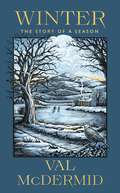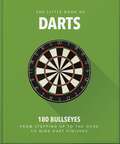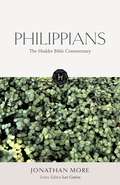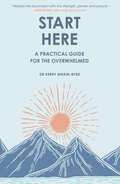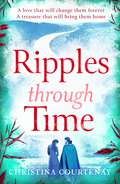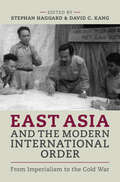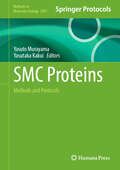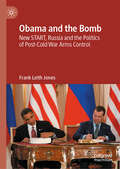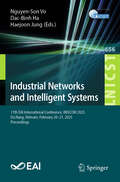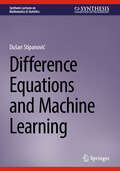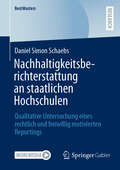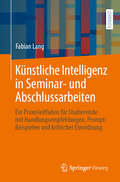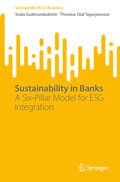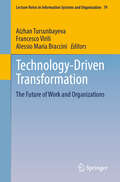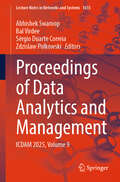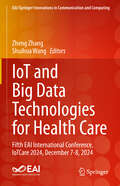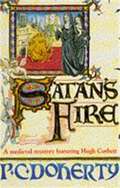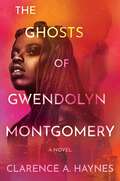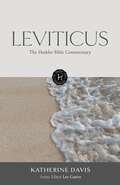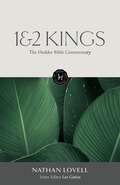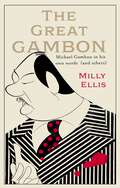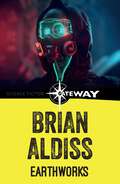- Table View
- List View
Nikolai Berdyaev: Moral Insights for our Human Future (Sophia Studies in Cross-cultural Philosophy of Traditions and Cultures #45)
by Catalina Elena Dobre Iván IvlampieThis collected volume brings attention to the understudied work of the Russian philosopher, theologian, and Christian existentialist, Nikolai Berdyaev (1874-1948), showing that his philosophy is important for the present and future. It appeals to students, researchers and the general audience in revealing that through Berdyaev, humanity does not simply evolve from the biological to the technological but rather it is a presence and spiritual experience that places beings in the cosmos and provides real meaning. This edited volume presents contributions from a diverse group of scholars filling a lacuna in the scholarship of this classical thinker.
Winter: A memoir of warmth and wonder from one of Scotland's best-loved writers (Seasons)
by Val McDermid'A warm hug of a book... like sitting by a roaring winter fire' JACKIE KAYWinter is the time to snuggle indoors without guilt; to curl up on the sofa with a good book or a box set, a hot drink or a wee whisky to hand.Val McDermid has always had a soft spot for winter: the bitter clarity of a crisp cold day, the vivid skies over the Firth of Forth, the crunch of frost on fallen leaves and the chance to be enveloped in big jumpers and thick socks.In Winter, she takes us on an adventure through the season, from the frosty streets of Edinburgh to the windblown Scottish coast, from Bonfire Night and Christmas to Burns Night and Up Helly Aa. She remembers winters from childhood, the thrill of whizzing over a frozen lake on skates, carving a 'neep' (swede) for Halloween and being taken to see her first real Christmas tree in the town square, lights twinkling bravely in the dark Scottish winter night.Above all, she shows us that winter is a time of rest, retreat and creativity, for scribbling in notebooks and settling in beside the fire. This is a charming and cosy celebration of the winter season from one of Scotland best-loved writers.
The Little Book of Darts
by OHWith Luke "The Nuke" Littler's ascendance to the throne as the new King of Darts - at just 17 years old! - the medieval pub game of darts is experiencing a renaissance. The game's popularity is continuing to rise, with more and more countries stepping up to the oche and growing interest among the younger generations. In the past 12 months alone, the number of youngsters in Britain playing darts has doubled, with 35 per cent of the nation now more interested in the sport than they were two years ago.Of course, darts has always been popular, with legions of fans remaining loyal since its eighties heyday - who can forget Jim Bowen's Bullseye amassing more than 20 million weekly viewers when it was on TV? But now darts is in a new league all of its own, with people tuning into tournaments from across the globe.This little guide contains 180 fun and fascinating facts, quotes and stats about the new favourite sport, an intoxicating mix of precision throwing that suddenly turns into quick-fire maths. This tiny tome celebrates not only the game's latest rise to fame, but also its cherished 1,000-year history and the long list of players who have stood proudly at the oche, either down the pub or as professionals.With the World Darts Championship in December 2025 set to be the most viewed tournament ever, the world of darts is once again about to take flight. To quote the late, great Martin Fitzmaurice, "Are you ready? Ladies and Gentlemen... Let's... Play.... Darts!"Sample content:"I just wake up, play on my Xbox, have some food, have a chuck on the board, and go to bed... I don't engage with anything outside the house; I'm just level-headed."Luke Littler, after coming second in the World Darts Championship final, ESPN, January 2024."When I keep focus, when I keep believing in my own ability, anything is possible. I'm not here for the jolly, I'm here to win a tournament, and we all know that."Michael Van Gerwen, on his focus, Sky Sports, January 2025.Slop is the term given to a lucky or unintended score, often when a dart doesn't go where it was meant to, but still earns a decent score.
The Hodder Bible Commentary: Philippians (Hodder Bible Commentary)
by Jonathan MoreAbout the Hodder Bible Commentary50 volumes. 4 million words. Global representation.Engage with the latest theological thinking in this new, readable exposition of the Bible in 50 volumes. Covering all books of the Bible and including the full the Anglicised New International Version (NIV) text, the Hodder Bible Commentary series makes connecting scripture and scholarship easier than ever.Explore how the Bible intersects with 21st century life with commentary that is doctrinally sensitive and globally aware, sourced from a team of contributors representing a variety of cultural and ecclesiastical contexts from around the world.Designed to be accessible to all adult readers and particularly for those who preach, teach, and lead Bible studies, each book is split into manageable sections suitable for talks or study groups. Read the Bible text and the commentary side by side to gain a deep knowledge of scripture and the variety of interpretations that can be made from it.Be refreshed with new understanding. Be encouraged to apply your conclusions to life today.
Start Here: A practical guide for the overwhelmed
by Kerry Makin-ByrdBurnout results from chronic stress and when we experience it, we can feel exhausted, hopeless and ineffective. Our performance suffers and we can feel disconnected at work and at home. Over time, stress and burnout can lead to even more significant physical and mental health problems.Many of us yearn for a map which will guide us from languishing to flourishing, narrated by an expert who has climbed the same mountain. This book is that map - distilling a century of science into a three-step recipe for treating burnout: Soothe, transcend, then move.Research is supported by relatable personal stories, practical real-life lessons and beautiful illustrations. This is the emotional life manual that the overwhelmed reader needs; just Start Here.
Ripples Through Time: The gripping and sweepingly romantic new dual-time novel from the author of ECHOES OF THE RUNES
by Christina CourtenayBrimming with romance, adventure and vivid historical detail, Christina Courtenay's gripping dual-time novel travels from the present day to the battles of West Mercia . . .'Courtenay writes so beautifully, drawing you in to each scene, that time and pages slip by effortlessly' ERIN GREEN'Whenever I need a break from the 21st Century, I read one of Christina Courtenay's novels' SUE MOORCROFT'The Queen of Viking Romance' CATHERINE MILLER__________________________West Mercia, AD 873Merewen's settlement is on guard against the threat of the 'Heathen' Norsemen. But for Merewen, the threats are also coming from within, as her future is cruelly snatched away from her. Eirik, a Norseman, finds himself abandoned and injured after a plunder of Mercian land goes wrong. He thinks his fate is sealed - until an angel, bearing the name Merewen, saves his life.Hereford, Present DayAlix moves to her uncle's farm in Hereford, where she hopes to heal her recently broken heart. But something strange is in the air. Every time she touches a crystal pendent - a family heirloom gifted to her - she is haunted by memories of a life she never lived, of a relationship she never had, in a time she never existed in. A Viking hoard was discovered on Noah's farm by his sister and her criminal boyfriend. Hounded by the police, Noah must find the rest of the treasure whilst also deciphering the strange connection he has to Alix - a connection that seems to transcend their reality.As the echoes of the past seep into the present, lose yourself in the evocative and romantic novels of Christina Courtenay that your favourite authors just can't get enough of:'I've been looking forward to this book . . . and it far exceeded my hopes and expectations. Romantic, fascinating and gripping, it's one of my favourites of the series' NICOLA CORNICK'I wonder if I, too, can find a way to travel back in time... If not, reading this book was the next best thing' GILL STEWART'This epic romance is sure to sweep you off your feet!' TAKE A BREAK'An absorbing story, fast-paced and vividly imagined' PAMELA HARTSHORNE'A love story and an adventure, all rolled up inside a huge amount of intricately-detailed, well-researched history. Thoroughly enjoyable' KATHLEEN MCGURL
East Asia and the Modern International Order: From Imperialism to the Cold War
by David C. Kang Stephan HaggardThis crucial interdisciplinary work brings together historians and international relations specialists to re-examine fourteen events in twentieth-century East Asia that shaped world and regional politics. In a series of case studies framed by conceptual essays the authors examine key moments and their wider significance, including the Chinese Exclusion Acts in the United States; the Japanese racial equality proposal at the Versailles conference of 1919; anti-colonial movements in Southeast Asia before 1945; and the changing nature of sovereignty in the Pacific Islands. The authors decenter the Cold War in Asia away from American and European perspectives and examine how countries in the region positioned themselves given distinctive domestic coalitions. These historical examples demonstrate the unique East Asian experience of war, empire, and political independeence, shedding valuable light on contemporary international relations and the challenges faced in Asia-Pacific today.
SMC Proteins: Methods and Protocols (Methods in Molecular Biology #2991)
by Yasuto Murayama Yasutaka KakuiThe aim of this volume is to provide a wide range of experimental methods for analyzing molecular functions of SMC complexes, such as microscopic imaging, protein localization, chromosome conformation analyses by deep DNA sequencing and biochemical reconstitution with purified proteins or cell lysate. Written in the highly successful Methods in Molecular Biology series format, the chapters include brief introductions to the material, lists of necessary materials and reagents, step-by-step, readily reproducible laboratory protocols, and a Notes section which highlights tips on troubleshooting and avoiding known pitfalls. Authoritative and cutting-edge, SMC Proteins: Methods and Protocols aims to be comprehensive guide for researchers in the field.
Obama and the Bomb: New START, Russia and the Politics of Post-Cold War Arms Control
by Frank Leith JonesThis book is the first study of how President Barack Obama and his administration used the negotiation and ratification of an arms control treaty, the New Strategic Arms Reduction Treaty (New START), as a vehicle for advancing one of the president&’s primary foreign policy objectives, a reset of US relations with Russia in the early years of his first term of office. It is a study of the administration&’s efforts to move from a president&’s strategic vision to defining that vision as a policy priority and ultimately, successfully negotiating what the president deemed the first and most important element of the reset agenda.
Industrial Networks and Intelligent Systems: 11th EAI International Conference, INISCOM 2025, Da Nang, Vietnam, February 20–21, 2025, Proceedings (Lecture Notes of the Institute for Computer Sciences, Social Informatics and Telecommunications Engineering #656)
by Nguyen-Son Vo Dac-Binh Ha Haejoon JungThis book constitutes the refereed proceedings of the 11th EAI International Conference on Industrial Networks and Intelligent Systems, INISCOM 2025, held in Da Nang, Vietnam, during February 20–21, 2025. The 21 full papers included in this book were carefully reviewed and selected from 53 submissions. They were organized in topical sections as follows: Industrial Networks and Intelligent Systems; Telecommunications Systems and Networks; Information Processing and Data Analysis; Security and Privacy.
Difference Equations and Machine Learning (Synthesis Lectures on Mathematics & Statistics)
by Dušan StipanovićThis book presents in-depth explanations of well-known and recognized behaviors of neural networks in machine learning. In addition, the author provides novel technical analyses of behaviors of discrete-time dynamical systems modeled as difference equations. These analyses and their outcomes are closely related to models of very well-known neural networks such as Long Short-Term Memory (LSTM) and Gated Recurrent Unit (GRU) neural networks, which are widely used in machine learning and artificial intelligence (AI) applications. The author also discusses difference equations and their relevance to neural networks, machine learning, and AI.
Nachhaltigkeitsberichterstattung an staatlichen Hochschulen: Qualitative Untersuchung eines rechtlich und freiwillig motivierten Reportings (BestMasters)
by Daniel Simon SchaebsNachhaltigkeit ist längst zu einem zentralen Steuerungs- und Qualitätskriterium in der Hochschulentwicklung geworden. Doch wie steht es um die rechtlichen Rahmenbedingungen, die praktische Umsetzung und die strategischen Chancen öffentlicher Fachhochschulen im Kontext der wachsenden ESG-Anforderungen und der Corporate Sustainability Reporting Directive (CSRD)? Dieses Buch liefert erstmals eine fundierte Analyse zur Nachhaltigkeitsberichterstattung an staatlichen Fachhochschulen in Deutschland und Österreich. Auf Basis von ExpertInnen-Interviews werden rechtliche Verpflichtungen, praktische Erfahrungen sowie mögliche Förderansätze durch den Gesetzgeber untersucht – und so die vielfältigen Herausforderungen, Hemmnisse und Chancen offengelegt. Die Ergebnisse zeigen: Zwischen verpflichtender Regulierung und freiwilliger Berichterstattung eröffnen sich für Hochschulen neue strategische Handlungsspielräume. Ein praxisnahes Reifegradmodell sowie konkrete gesetzgeberische Optionen machen das Werk zu einer wertvollen Orientierung für Wissenschaft, Politik und Hochschulmanagement.
Künstliche Intelligenz in Seminar- und Abschlussarbeiten: Ein Praxisleitfaden für Studierende mit Handlungsempfehlungen, Prompt-Beispielen und kritischer Einordnung
by Fabian LangDieses Buch bietet Studierenden einen praxisnahen Leitfaden zur effektiven Nutzung von Künstlicher Intelligenz (KI) in Seminar- und Abschlussarbeiten. Es zeigt, wie KI gezielt in allen Phasen der Arbeit – von der Planung bis zum Feinschliff – eingesetzt werden kann, um die Qualität und Effizienz der wissenschaftlichen Arbeit zu steigern. Mit klaren Anleitungen, praktischen Prompt-Beispielen und Warnungen vor typischen Fehlern vermittelt es Sicherheit im Umgang mit dieser Technologie. Das Buch fördert einen verantwortungsvollen Einsatz von KI und gibt gleichzeitig wichtige Hinweise zu akademischer Integrität und richtigem Zitieren von KI-Quellen. Es richtet sich nicht nur an Studierende, sondern auch an Lehrende, die ihren Studierenden eine fundierte Orientierung im digitalen Wandel bieten möchten. Ein unverzichtbares Werk für alle, die Künstliche Intelligenz als wertvolles Werkzeug in der Wissenschaft nutzen wollen.
Sustainability in Banks: A Six-Pillar Model for ESG Integration (SpringerBriefs in Business)
by Throstur Olaf Sigurjonsson Svala GudmundsdottirThis book explores the ways in which banks are integrating sustainability into their organizational structure with particular focus on the strategic positioning and execution of sustainable practices. Through comprehensive analysis, the authors evaluate the advantages and disadvantages of these sustainability initiatives, revealing the complex implications, challenges, and opportunities that arise from embedding these principles at the core of banking operations. Enhanced by real-world case studies and enriched with interviews from 14 industry professionals, the book offers a unique blend of theoretical depth and practical insights to researchers, scholars, academics, professionals, and policymakers in the banking sector.
Technology-Driven Transformation: The Future of Work and Organizations (Lecture Notes in Information Systems and Organisation #79)
by Alessio Maria Braccini Francesco Virili Aizhan TursunbayevaTechnology is a transformative force that redefines how organizations operate and shapes the modern workplace. This book examines the wide-ranging impacts of digital transformation, emerging technologies, and data-driven decision-making on both individuals and organizations, offering insights into topics such as business analytics, digital maturity, and the adoption of innovations like AI and blockchain. It explores how organizations can harness real-time data, measure key performance indicators, and adopt processes based on new technologies. The book also investigates critical issues such as knowledge retention, workplace diversity, algorithmic transparency, and the unintended consequences of technological advances on employee well-being and workplace dynamics in hybrid and AI-driven environments. By integrating interdisciplinary frameworks, empirical research, and case studies, this book provides a comprehensive resource for academics, practitioners, and policymakers navigating the complexities of digital transformation. Based on revised versions of top double-blind peer-reviewed papers from the annual Italian Chapter of the Association for Information Systems conference, held in Piacenza, Italy, in October 2024, it offers valuable guidance for embracing technology-driven change.
Proceedings of Data Analytics and Management: ICDAM 2025, Volume 9 (Lecture Notes in Networks and Systems #1615)
by Zdzislaw Polkowski Abhishek Swaroop Sérgio Duarte Correia Bal VirdeeThis book includes original unpublished contributions presented at the International Conference on Data Analytics and Management (ICDAM 2025), held at London Metropolitan University, London, UK, during June 2025. The book covers the topics in data analytics, data management, big data, computational intelligence, and communication networks. The book presents innovative work by leading academics, researchers, and experts from industry which is useful for young researchers and students. The book is divided into ten volumes.
IoT and Big Data Technologies for Health Care: Fifth EAI International Conference, IoTCare 2024, December 7-8, 2024 (EAI/Springer Innovations in Communication and Computing)
by Zheng Zhang Shuihua WangThis book constitutes the refereed post-conference proceedings of the 5th International Conference on IoT and Big Data Technologies for Health Care, IoTCARE 2024, which took place December 7-8, 2024, in Leicester, UK. The conference aims to provide a forum for presentation and discussion the state-of-art and future perspectives of Internet of Things and big data of health care. Industry experts, researchers and academics gather to share ideas and experiences surrounding frontier technologies, breakthroughs, innovative solutions and research results, as well as initiatives related to IoT and health care, and their applications. The topic focuses on the convergence of IoT and big data technologies for e-health, e-care, lifestyle, aging population, smart personal living, etc., applications.
Satan's Fire (Hugh Corbett Mysteries, Book 9): A deadly assassin stalks the pages of this medieval mystery
by Paul DohertyAn attempt on the King's life draws Hugh Corbett into a deadly investigation... In Satan's Fire, the ninth Hugh Corbett mystery from Paul Doherty, strange fires and gruesome murders test the sleuth's investigative ingenuity to the full. Perfect for fans of Ellis Peters and Robin Hobb.1303 and the Old Man of the Mountain remembers back to when he nearly killed Edward I thirty years before. He now decides to release an imprisoned leper knight to avenge old grievances and take the King's life. A few months later, two nuns are returning to their monastery in York, where they are confronted by the horrific sight of a man hungrily being consumed by fire, the sickly smell of burning flesh lingering in the air. News of the grisly death greets Edward as he arrives in York for secret negotiations with the leaders of the military Templar Order. His unease deepens when an attempt is made on his life. When the assassin, wearing Templar livery, is found dead - having been engulfed by a mysterious fire - Edward immediately turns to his Keeper of the Secret Seal, Hugh Corbett, to investigate. What readers are saying about Paul Doherty:'Good plots, clever twists and mostly impossible to work out''Paul Doherty's depictions of medieval England are truly outstanding''Another brilliant story in the excellent Hugh Corbett series by a superb historical author'
The Ghosts of Gwendolyn Montgomery: A Novel
by Clarence A. HaynesIn this sexy, page-turning debut, a high-powered publicist receives a threatening message and must confront her secret mystical past as ghosts prepare to invade our world."A must-read book for fans looking for a fresh, authentic voice in urban fantasy and horror." –Tananarive Due To be a client of Gwendolyn Montgomery—New York&’s most powerful publicist, at Sublime Creative—is to be infused with a certain oomph, a mysterious glamour. She seems to have created the ideal life with her handsome new boyfriend, the perfect match. But Gwendolyn has a legion of long-buried secrets that could unravel everything. After a grisly, bizarre incident at the Brooklyn Museum, Gwendolyn begins to realize that something nefarious is happening tied directly to her past, right as Fonsi Harewood comes back into her world. Fonsi is a queer Latinx psychic from the South Bronx who&’s caught up in a love triangle with a ghost and his mortal ex. He&’s able to communicate with the dead, and he comes with a dire warning for Gwendolyn, that the barrier between humans and spirits is weakening. Gwendolyn would prefer not to have anything to do with ghostly drama. Yet in order to get to the bottom of the spookiness derailing her life and threatening the world, she must face the demons she&’d long left behind. The Ghosts of Gwendolyn Montgomery is a sensuous, funny, mystical adventure that will leave you spellbound as you keep the pages turning.
Paradise
by Julie CohenKatie never stops moving-constantly changing her address, her boyfriends, her life. But every June, for a month, she goes back to Maine. To the old lake house her family calls Paradise.But one day Katie wakes up in a hospital bed in Maine, with no memory of the last eighteen months. From her current boyfriend to the global pandemic, Katie is lost. And everything at Paradise has changed, too... including her best friend in the world, Nic.Nic puts down deep roots. She still lives in the house where she grew up. She's the memory keeper of her family. And she's been in love with her best friend Katie for almost her entire life. Now Katie's claiming not to remember the night that destroyed their friendship forever. Is her amnesia real? Or does she just want to forget?And how can either of them move on, if only one of them remembers the truth?
The Hodder Bible Commentary: Leviticus (Hodder Bible Commentary)
by Katherine Davis50 volumes. 4 million words. Global representation.Engage with the latest theological thinking in this new, readable exposition of the Bible in 50 volumes. Covering all books of the Bible and including the full the Anglicised New International Version (NIV) text, the Hodder Bible Commentary series makes connecting scripture and scholarship easier than ever.Explore how the Bible intersects with 21st century life with commentary that is doctrinally sensitive and globally aware, sourced from a team of contributors representing a variety of cultural and ecclesiastical contexts from around the world.Designed to be accessible to all adult readers and particularly for those who preach, teach, and lead Bible studies, each book is split into manageable sections suitable for talks or study groups. Read the Bible text and the commentary side by side to gain a deep knowledge of scripture and the variety of interpretations that can be made from it.Be refreshed with new understanding. Be encouraged to apply your conclusions to life today.
The Hodder Bible Commentary: 1 & 2 Kings (Hodder Bible Commentary)
by Nathan Lovell'Praise be to the LORD who has given rest to his people Israel just as he promised. Not one word has failed on all the good promises he gave through his servant Moses.'1 KINGS 8:56The book of Kings is much more than an historical record. It is the story of the remarkable faithfulness of God to build the Kingdom he promised, even when his own people reject it. And it is about how different this Kingdom is to everything else the world has ever known.Nathan Lovell's thought-provoking commentary helps us to understand not only Israel's history, but how it shapes and challenges us today. As God works amongst his people, we begin to catch a glimpse of an entirely new type of world order. On the surface Kings is a book about power and glory, but by reading more deeply we begin to see the truth of Jesus' words, 'Blessed are the meek, for they will inherit the earth.'About the Hodder Bible CommentaryThe Hodder Bible Commentary is a comprehensive 50-volume Bible commentary series. Doctrinally sensitive and globally aware, its goal is to encourage a deepened knowledge and understanding of Scripture.Accessible and insightful expository commentary explores the timeless message of the Bible and applies it to the challenges of today's world. Written by a range of authors and supported by consultant editors from around the world, it represents a diversity of church and cultural contexts.With the full text of the NIV Bible interspersed with the commentary for easy reference, this series is ideal for preaching, teaching and personal study.
I'll Find You Where the Timeline Ends: a cosy YA timeslip romance with a gorgeous Korean setting
by Kylie Lee BakerBefore the Coffee Gets Cold meets Xo, Kitty in this cosy YA timeslip romance with a gorgeous Korean setting, cute cheesecake dates and a rogue time traveller you can't help but fall for. Here's one thing I know for certain: if I never see you again, the world will end.Yang Mina was born with the power to travel through time and has spent her life training to be an agent for the Descendants, a secret organisation which protects our timeline. But when she discovers that the Descendants are corrupt - and erased her sister from existence - her whole world unravels. Her only hope is Yejun, an irritatingly handsome but illegal agent. Can she ignore his charms long enough to restore the timeline, save her sister and pass her Calculus class?
The Great Gambon: Michael Gambon in his own words (and others)
by Milly EllisSir Michael Gambon was one of the greatest actors of the last 50 years, with a career that began as second spear carrier in Hamlet, alongside Anthony Hopkins (he had to lift Peter O'Toole - Hamlet - out of Ophelia's grave and was told he would never work again if he kept dropping him). He went on to star in plays by Harold Pinter and Samuel Beckett, as well as Dumbledore in the Harry Potter films .When Michael Gambon's memory began to fade, he found it increasingly difficult to remember his lines. Ultimately the job fell to Milly Ellis, to be his 'earwig', which she did for fifteen years, giving him his lines through an earpiece.This gave her the opportunity to see and hear him deliver some his most outstanding performances. As well as having chameleon-like abilities as an actor, Gambon was a legendary self mythologiser and this book celebrates the many outlandish stories he told about himself, as well as from those of his friends and fellow actors. Milly Ellis has woven the best of these - from the likes of Tom Hollander, Daniel Craig, Robert de Niro, Judi Dench and Eileen Atkins - into an affectionate tribute to this extraordinary man.
Earthworks
by Brian AldissA dead man is walking on the water - a sign of the political adventures into which Knowle Noland, ex-convict, ex-traveller and captain of the freighter Trieste Star, is about to stumble headlong.Knowles's world is one of choked, disease-ridden towns, robots and prison gangs tending the bare, poison drenched countryside. Ecology has become a meaningless word from the past. Only in Africa is the soil still fertile and the people still relatively vital. On the coast of Africa, Knowle runs his freighter aground; and there he meets Justine and the destructive destiny that purges him of guilt and frees him from hallucination.

